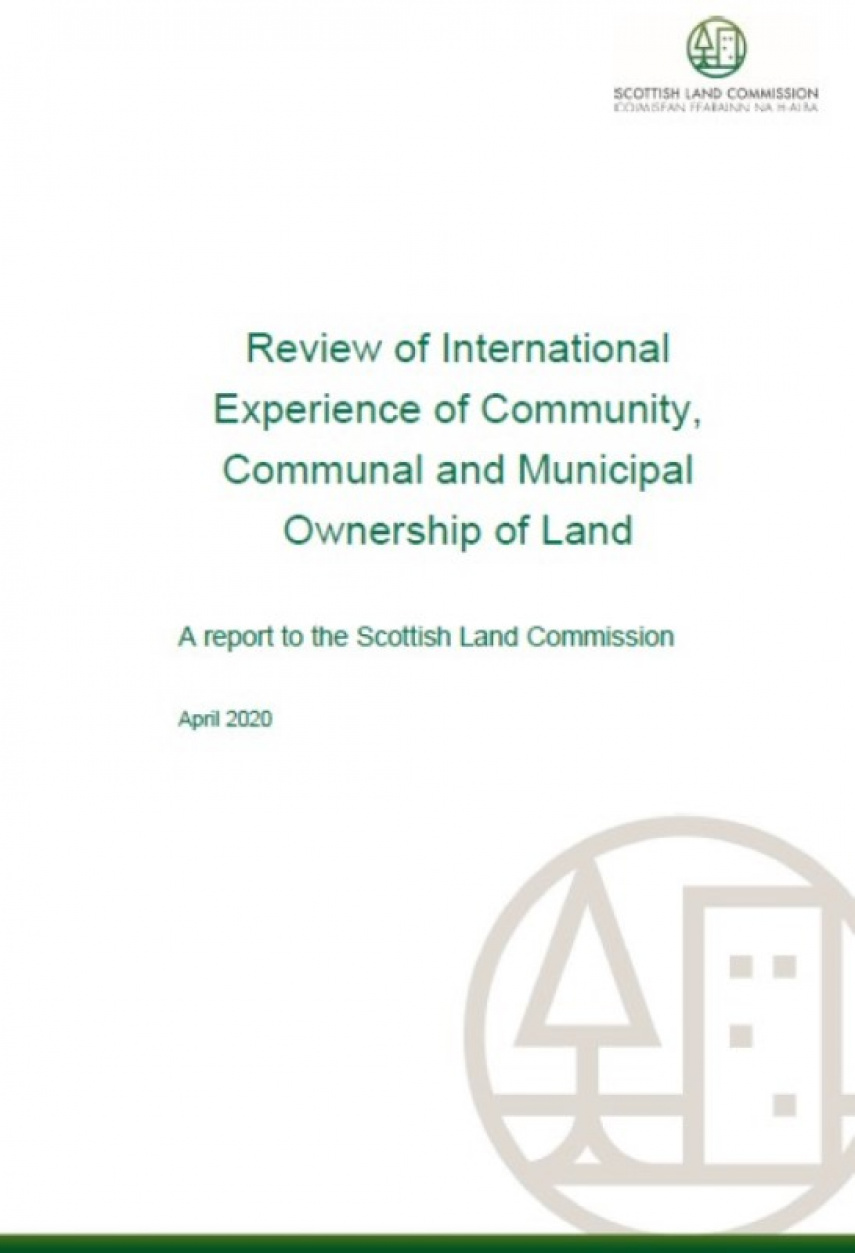
Is there such a thing as ‘normal’ community ownership?
James MacKessack-Leitch
In our latest blog, Policy Officer James MacKessack-Leitch looks at what Scotland can learn from understanding approaches to land ownership, use, and management in other countries.
In the midst of a global crisis, the world has never seemed smaller and learnings from international experience have never seemed more relevant.
The Scottish Land Commission is looking at international experience of land ownership and use to apply learning to Scotland. In October I blogged on how the Land Commission is learning from international experience, highlighting the research we’ve carried out so far, and some of the key themes and lessons that Scotland can learn from.
Today, we’ve published the 'Review of International Experience of Community, Communal and Municipal Ownership of Land' and its accompanying Land Focus paper. This report provides a much wider and deeper understanding of land ownership, use, and management approaches in other countries and jurisdictions through a number of detailed case studies.
It also clearly answers the question of what 'normal' community ownership looks like – and there’s no such thing.
However, far from being an unhelpful finding, it actually reinforces the fact that land ownership and governance in Scotland is highly abnormal from an international perspective. Not only does the research demonstrate that in the international context there is no such thing as 'normal community ownership,' it also shows why – and it’s that 'why' that is key.
Outwith Scotland, community and individual citizen involvement in governance and decisions relating to land is the norm, and in some European cases it has been for centuries. As a result of this involvement and engagement there has never been a drive for 'community ownership,' because the community already possesses and exercises many of the rights of ownership. This can also make it difficult – and somewhat irrelevant – to try and draw clear boundaries between private, public, and community ownership in the way we so often do in Scotland.
So if we remove the labels and look at the outcomes that these governance models deliver, the comparison becomes much clearer. There are a core set of aims that we can recognise across the differing international models shared with the rationale for supporting Scottish community ownership:
- Strong local governance
- Transparent decision-making
- Clear democratic accountability
- Focus on local priorities
- High levels of public engagement.
The really interesting aspect, though, is the multitude of community and communal governance models in use elsewhere to progress these aims, and the success with which they achieve their desired outcomes.
The same too can be said for some of the models of municipal land governance, for which Scotland really lacks any parallel at all. Although Scotland has local authorities, they bear little resemblance to the municipalities found elsewhere, particularly in Europe, which usually serve significantly smaller geographical areas and populations, and have far greater powers and autonomy.
These municipalities are often significant landowners and managers in their own right, but because of their small scale, autonomy, and democratic accountability they can appear to function more like a community company.
To put that into context, the largest of Scotland’s community-owned estates, both in terms of area and local population, are comparable to an average scale for a Norwegian municipality – and still significantly larger than municipalities in many other European countries.
The research also therefore indirectly highlights that the governance gap that exists in Scotland – at least as far as land reform is concerned – has potentially contributed to some of the issues raised by the Land Commission’s investigation into scale and concentration of ownership: as landowners of all kinds come to fill that gap, residents and communities can feel excluded both from the decision making process, and any share in the benefits. This in turn feeds the desire for better engagement, a greater say in land governance, and in some places for direct community ownership – all of which are perfectly normal outwith Scotland.
While there is currently widespread acknowledgement that local governance is in need of reform, work to begin building the types of governance mechanisms and structures needed to progress land reform could start now. For example, the implementation of regional land use partnerships could be just one potential route to empowering local citizens and communities in decisions relating to land use and management in their local area.
There is also a good case for looking again at existing powers and using them more creatively, as some of the case studies from the report show.
In the small German city of Tübingen, the municipality has adopted a progressive approach that allows the development of building land in the 'interim purchase model.' The municipality purchases land and assigns appropriate planning permission(s). Private developers then have the opportunity to buy land with planning permission already approved. With this approach, the municipality controls development via the planning permission process and its 'interim' ownership to ensure control over social housing and limit the amount of housing sold at or above market value.
Whether such an approach would work in Scotland isn’t clear at the moment, but it’s the sort of creative use of existing powers that is very much worth exploring – which is also one of the recommendations we made to Scottish Ministers in our paper 'Options for Land Value Uplift Capture.'
Overall, whether we’re looking at municipal or community, or indeed mixed, governance models in the international experience, how land is owned, used, and managed is ultimately a product of historic and prevailing cultural circumstances. It is neither natural, inevitable, nor fixed – so as cultural expectations change, whether by evolution or revolution, so too can the models we use to deliver upon these expectations.
This report, and the Land Focus paper that explores it, provide us a snapshot of how others think about and frame land ownership and use, how the rights associated with landownership are distributed, and how they got there. The question for you, for us, and the whole of Scotland, is: what do we choose to learn from this experience, and how do we fulfil those lessons?
